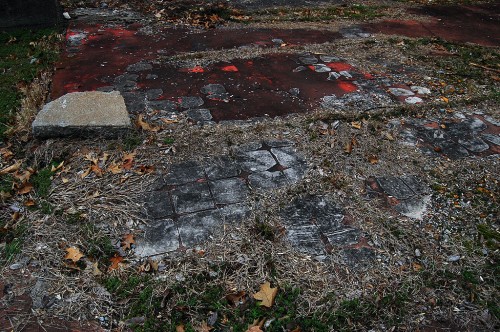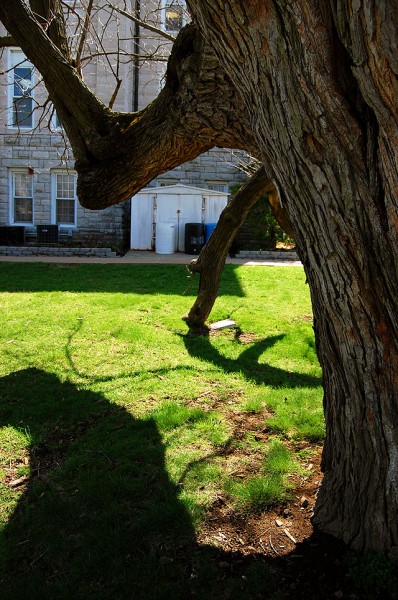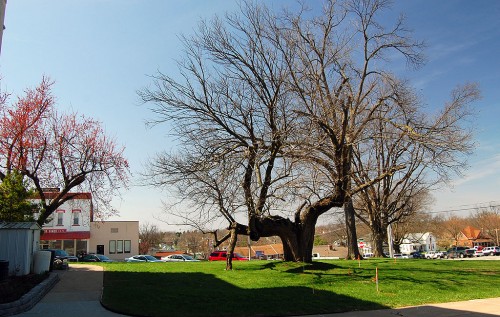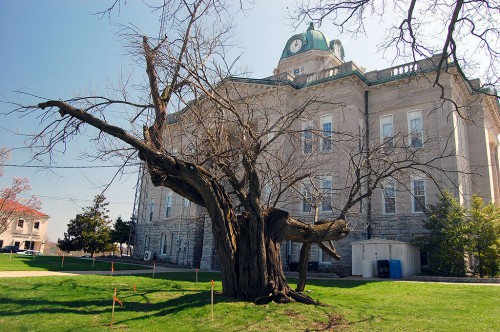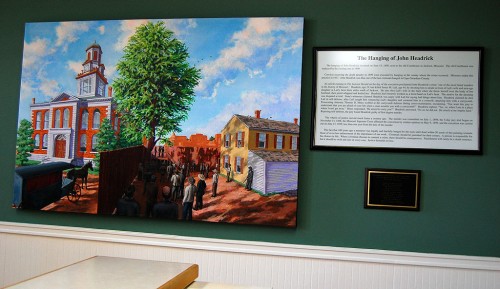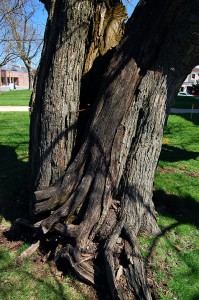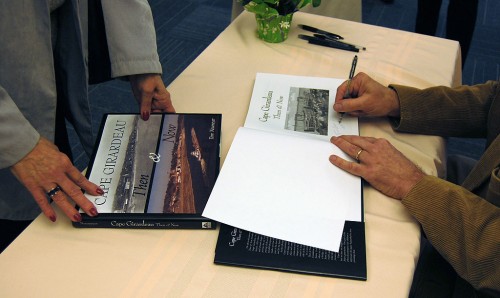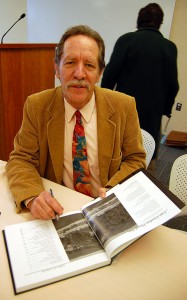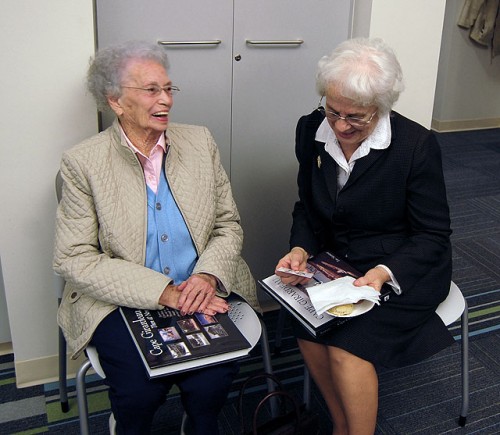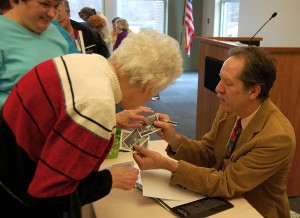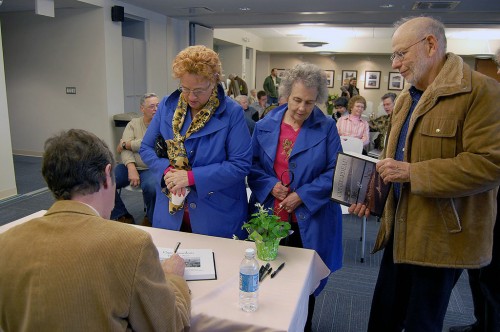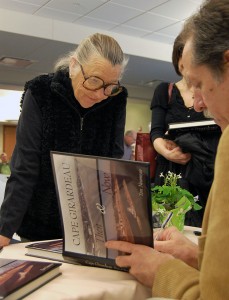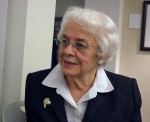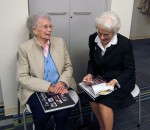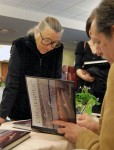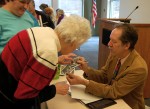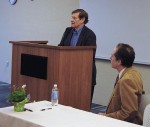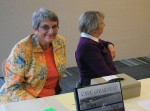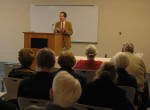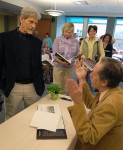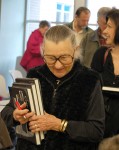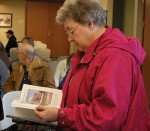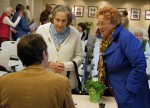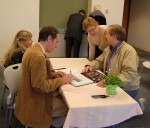Liberty with the truth warning: there may be some parts of what you read next that might not exactly be lies, but they stretch the truth to the point of snapping. [The story was originally written to promote the Convention Bureau’s Storytelling Festival.]
What’s the matter with her arm?
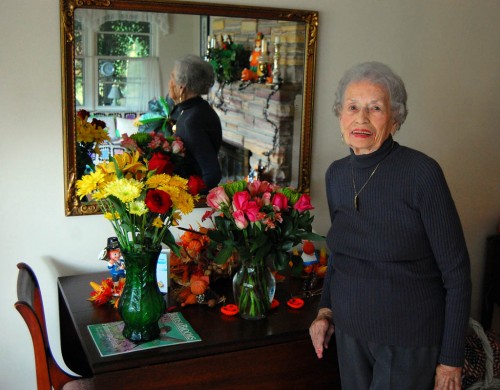 Mother couldn’t figure out why my brother Mark’s friends always looked at her funny. They’d appear to be staring, then glance away quickly when she looked at them.
Mother couldn’t figure out why my brother Mark’s friends always looked at her funny. They’d appear to be staring, then glance away quickly when she looked at them.
She found out later that Mark had told them, “Don’t stare at my mother’s arm, she’s self-conscious about it.”
“What’s the matter with your mother’s arm,” they’d ask.
It’s a long story
Here’s how he tells it in (mostly) his own words:
After Dad died and all of us boys scattered all over the country, Mother got a little lonely. She was okay financially, but she wanted to do something a little different to keep busy, something that would let her see the sights, be around other people and make herself feel useful.
She was a cook on a riverboat
 She decided to work as a cook on a towboat, The Robert Kilpatrick. She worked 20 days on and got 20 days off.
She decided to work as a cook on a towboat, The Robert Kilpatrick. She worked 20 days on and got 20 days off.
She had her own small utility boat that was kept on the barge on a hoist. When she ran low on supplies, she would have the captain radio ahead to the nearest town and give them the “grocery list.” As they came close to the town, they would lower her boat into the water. She would take off, load up the supplies (the store would meet her at the river with them), and then she’d floor it to catch up with the tow.
One day as the tow was being broken up and put into the lock and dam (modern day tows now “push” as many as 30 barges at a time and dams/locks were not designed to accommodate more than eight at a time, two abreast), she decided she wouldn’t launch her own boat, she’d stay with the tow. She was getting ready to climb a steel ladder from the the barge to the top of the lock so she could board a waiting cab to go into town for the supplies when something went terribly wrong.
Tragic accident took her arm
 Suddenly the barges shifted in the lock and her arm was caught between the edge of the barge and the concrete dam wall. It pinched it clean off at the elbow.
Suddenly the barges shifted in the lock and her arm was caught between the edge of the barge and the concrete dam wall. It pinched it clean off at the elbow.
Tragic, yes, but not enough to keep our mother down. No sir. In fact, some of the guys in the machine shop – the burly guys who ate steak for breakfast and kept the massive engines working down below – fashioned her a couple of custom “snap on” tools that were a little more functional than the basic hook that was all insurance would cover.
One was a spatula that could easily turn extra large omelets (and used to scrape the grill to keep food from sticking to it); the other was a meat fork with three tines. Two tines faced the the same direction so she could pick up meat from the grill, and one tine was bent 90 degrees in the other direction, so she could open and close the oven doors with it.
OSHA said somebody’s gonna get an eye poked out
OSHA thought the custom tools created a hazard to workers who might get impaled if the boat hit rough water and caused her to stumble, so she quit rather than kowtow to bureaucrats.
She became a Happy Hooker
 Her next job was working for the city of Cape Girardeau as a wrecker driver. She drove a tow truck all over town looking for scofflaws who had outstanding parking tickets so she could impound their vehicle. Nobody ever tried to stop her after she raised her artificial arm and clicked her custom tool fingers at them like mad magpies.
Her next job was working for the city of Cape Girardeau as a wrecker driver. She drove a tow truck all over town looking for scofflaws who had outstanding parking tickets so she could impound their vehicle. Nobody ever tried to stop her after she raised her artificial arm and clicked her custom tool fingers at them like mad magpies.
Prosthetic technology progressed to the point where she decided to give up the hook and custom attachments for an arm that was covered in soft plastic that was almost lifelike. The doctors did a great job of matching her skin tone, too.
She got so she’d play along
When Mark’s friends threw him a surprise 50th birthday party, Mother, Son Adam and I showed up. When she noticed some of the guests giving her arm a quick glance, she pulled her hand up into her sleeve so it looked like she had left her prosthesis at home.
“You can’t take that slot machine”
Storytelling is in our genes.
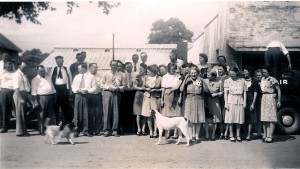 My mother’s family owned several businesses in Advance at one time or another. One was a tavern that had a few slot machines to bring in some extra (if illegal) income. Her parents had to leave one afternoon and left her in charge. She was all of about 13 years old.
My mother’s family owned several businesses in Advance at one time or another. One was a tavern that had a few slot machines to bring in some extra (if illegal) income. Her parents had to leave one afternoon and left her in charge. She was all of about 13 years old.
It must have been an election year, because the place suddenly filled with law enforcement officers who were going to confiscate the slot machines as being illegal gambling devices. Mother knew that one of the machines was full of money, so she stood up to the sheriff and said, “You can’t take that one. It’s broken. If it doesn’t work, it’s no more a gambling machine than that bar stool.”
They left it behind.
Don’t forget the Storytelling Festival
If you made it all the way down here, you must appreciate tall tales. When this story was first published, you could click on the photo below, which would take you to the Convention Bureau’s Storytelling Festival website. I had optimistically written, “It’ll help me convince the convention bureau folks that this would be a great place to advertise, and it’ll set you up for a weekend that sounds like a lot of fun.” It might have done the latter, but the former never happened.



